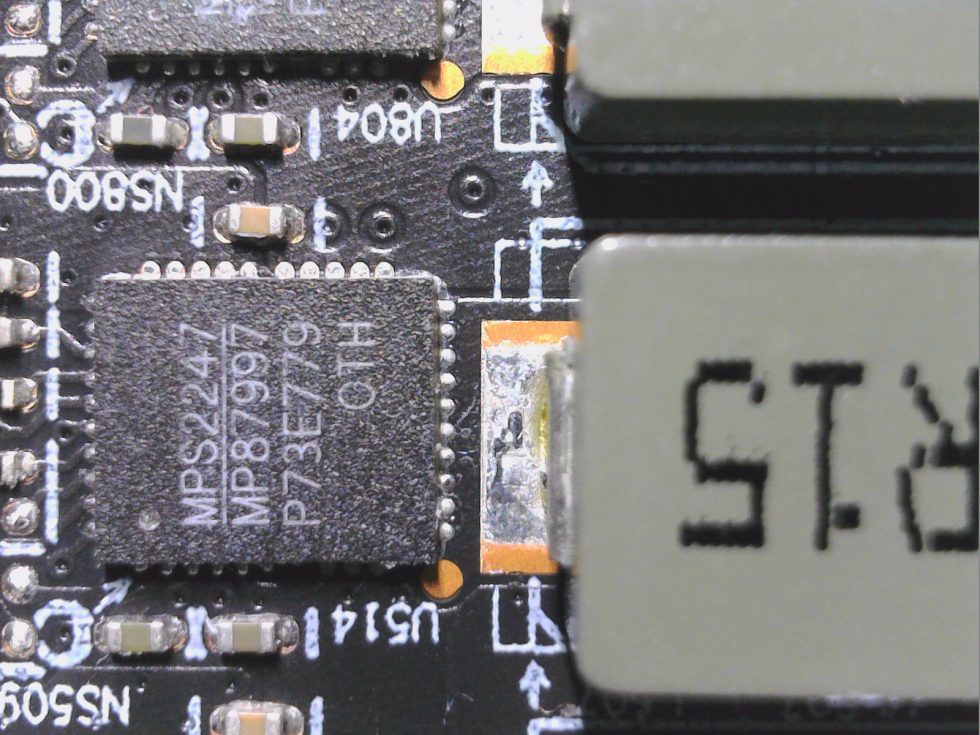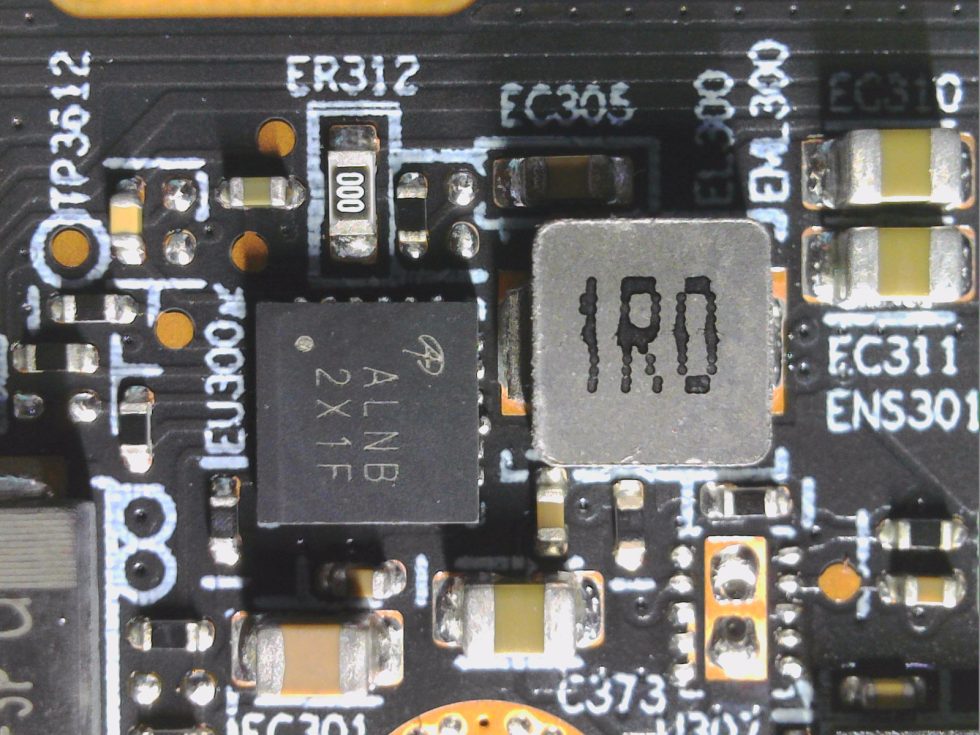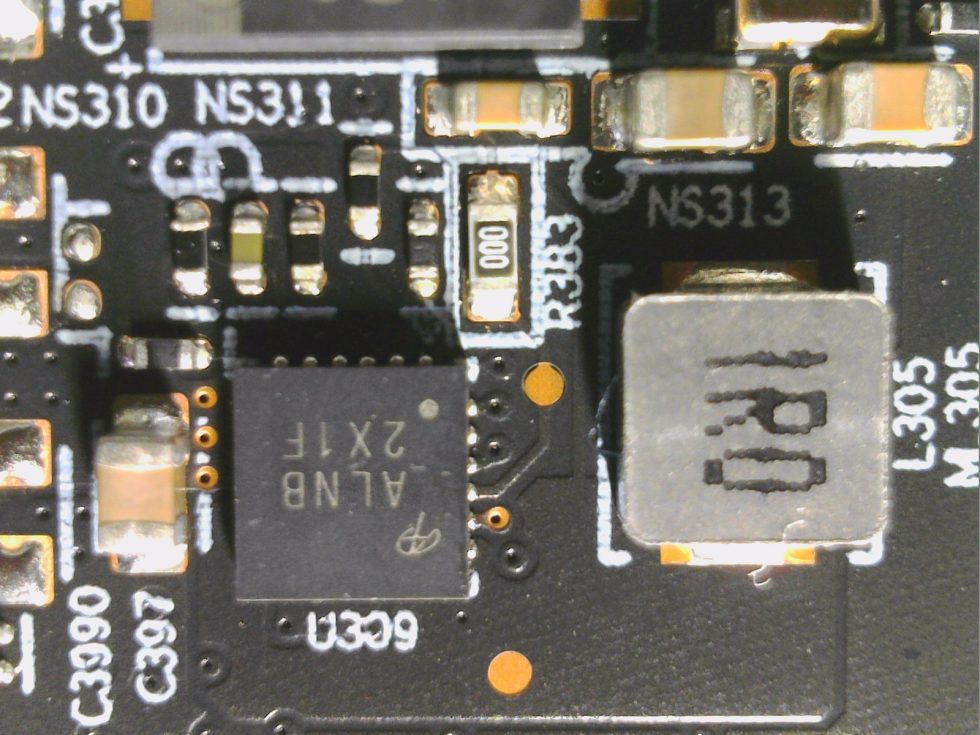PCB layout and components
In principle, the XT’s board is a slightly simplified version of the XTX board. Here we also find VDDCR_GFX. For this, only 10 instead of 12 phases are used, each of which then controls a single voltage regulator. VDD_SoC shrinks to 2 instead of 3 phases and one voltage regulator per phase, and VDDCR_USR with 1 phase and thus also only one voltage regulator. In addition, there are the 3 phases or 3 voltage regulators for VDD_MEM and a single buck converter for VDDCI_MEM.
The generation of VDDCI_MEM is not a big item performance-wise, but it is enormously important. It is used for the GPU-internal level transition between the GPU and the memory signal, something like the voltage between the memory and the GPU core on the I/O bus. In addition, one still generates a constant source for 0.75 volts. The majority of these very similar voltage transformers are located on the front of the board. There is also a 1.8V source (TTL, GPU GPIO), VDD_13 (Aux) and an ultra-low dropout chip generates the very low voltage for the PLL area (VPP).
Two PWM controllers for the generation of the most important phases sit on the back in the upper left third of the board, another one on the upper right. AMD relies on Monolith’s top products this time, just like NVIDIA did for the reference cards. For the 10 phases of the VDDCR_GFX the first rail of the MP2857 is used, for the generation of the VDD_MEM the second rail. It is a digital, multi-phase, dual-rail controller that primarily provides power for PWM VID core and is also compatible with AVSBus interface.
The MP2857 can (and should) also work with Monolith’s Intelli-Phase products to complete the multi-phase voltage regulator (VR) solution with a minimum of external components. The two somewhat smaller and unfortunately also not publicly available MP2856s are then responsible for VDDCI, VDD_SoC and VDDCR_USR, depending on the side.
All power stages used, including those for the memory, are also Monolith products. The MP87997 is also not freely documented, but it should be a very powerful monolithic half-bridge. The integration of drivers and MOSFETs (DrMOS) results in high efficiency due to optimal dead time and reduction of parasitic inductance. This small, 5 mm x 6 mm LGA device is a perfect fit for the MP2857 and MP2856. An MCU for all the control tasks is missing, but of course we have the 10 RAM modules from SK hynix with the 20 Gbps.
- 1 - Einführung, technische Daten und Technologie
- 2 - Teardown: PCB und Komponenten
- 3 - Teardown: Kühler und De-Montage-Tips
- 4 - Summe Gaming-Performance WQHD (2560 x 1440)
- 5 - Summe Gaming-Performance Ultra-HD (3840 x 2160)
- 6 - Details: Leistungsaufnahme und Lastverteilung
- 7 - Lastspitzen, Kappung und Netzteilempfehlung
- 8 - Temperaturen, Taktraten und Infrarot-Analyse
- 9 - Lüfterkurven und Lautstärke
- 10 - Zusammenfassung, Fazit und Verlosung












































1,249 Antworten
Kommentar
Lade neue Kommentare
Urgestein
Veteran
Urgestein
Mitglied
Mitglied
Mitglied
Mitglied
Mitglied
Mitglied
Mitglied
Urgestein
Veteran
Neuling
Mitglied
Mitglied
Urgestein
Urgestein
Neuling
Veteran
Alle Kommentare lesen unter igor´sLAB Community →